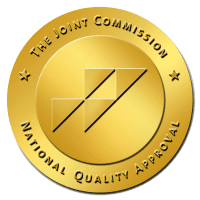Studies show that between 15% and 43% of girls and 14% to 43% of boys will experience at least one trauma during adolescence. Does this include you?
No matter what type of traumatic experiences you had to live through, those encounters can generate a range of different emotions, from guilt and sadness to shame and depression. Left unprocessed, those emotions can become stuck in your mind and body.
No matter what age or stage you’re at when you begin, you can learn how to heal from childhood trauma and reclaim your future. Today, we’re sharing 11 steps that can help you start this transformative journey.
1. Find a Place to Ground Yourself
Healing from trauma takes time, and you’ll need a comfortable space to work through the process. If possible, find a room in your home where you can go and release your emotions. This may be a bedroom, a guest room, or even a spacious closet.
No matter the size of the space, your privacy and security are most important. Make sure it’s in an area of your house where you won’t be easily distracted or disturbed. Try to set aside time each day to enter this room and practice grounding yourself.
While there are many different tools and apps designed to support this practice, you already have everything you need to get started. Simply close your eyes, start breathing deeply, and focus entirely on the sensations passing through and around your body.
Feel the ground beneath you, and the sounds all around you. If a thought enters your mind, allow yourself to think about it briefly, then release it as you return to your sensory observations. Imagine that your body is heavy, and feel it sink deeply into the earth.
It can take a while to excel at the art of grounding, or mindful meditation. However, this first step will set the stage for the rest of your healing journey. It’s also a vital tool for anyone who wants to improve their overall mental wellness and eliminate the noisy distractions around them.
2. Bring It to Mind
Adults who have experienced childhood trauma often choose to push those painful memories way back into their psyches, where they can’t access them on a regular basis. Sometimes, their minds even selectively withhold certain information that’s considered too difficult for them to process.
This is a safety mechanism that helps people maintain a sense of normalcy, even if they’ve lived through something extremely traumatic, such as childhood abuse. While there’s freedom in forgetting, it can also be limiting. You might discover that you’re only living on the surface and aren’t allowing yourself to feel truly deep emotions.
This can leave you feeling numb most of the time, or unable to tap into your deep feelings, even when you’re around people you love.
Once you’ve grounded yourself, try to think of a memory you can associate with the trauma of your past. This can be a small detail or a major remembrance but allow it to enter fully into your mind. Some people might start to feel emotions instantly, while others will take a while.
3. Observe Your Reaction
Pay close attention to the way your body naturally reacts when you recall the traumatic experience. Instead of pushing those sensations down, allow them to course through you for a moment as you quietly reflect.
You may notice that you’re feeling emotions you haven’t felt for quite a while. Some of them may even manifest physically. For instance, you might feel tingling or tightness in your joints, or a burning sensation in your chest. Allow those experiences to happen and recognize that they’re telling you something about your past.
Observe as much as you can and take note of how your mind and body are connected. This can help you understand why you’re holding tension or pain in certain areas and how it’s related to the trauma you’re still trying to overcome.
4. Name Your Emotions
Next, move onto naming those sensations. Could the burning you feel in your heart be anger? Or is it anxiety?
What about the strain in your shoulders or the heat you feel behind your eyes? Is that anger building up inside of you?
As you perform this exercise, keep in mind that many emotions can present similarly to one another. Try your best to name the ones you’re actively feeling and consider where they’re occurring most prominently throughout your body.
To successfully work through the emotions you’re feeling after thinking about your trauma, you must be able to label and name those emotions. This can be a tricky step but keep with it. The better you can articulate how you’re feeling and where you’re hurting, the quicker you can get to work addressing that pain.
At this point, you might find it helpful to write your observations in a journal. This way, you can track your progress and reflect on your sentiments as you progress through this process.
5. Be Gracious With Yourself
Think about the grace and love you so freely extend to others. Then, think about how reluctant you are to judge them. Now, consider why you’re so much harder on yourself.
Too often, people who have experienced childhood trauma work overtime to keep the peace, pouring into others while neglecting their own needs or invalidating their own emotions. Once you’ve allowed your feelings to come to the surface, resist the urge to run away from them.
Instead, the exact opposite practice can help you move into the next phase of your healing journey. Give yourself permission to love every part of your experience, including the painful feelings it brings to life.
To do so, you can repeat phrases such as, “I love the sadness I’m feeling right now. It validates the scope of my experience and helps me relate to others who are traveling down the same path.” It might be hard to find the lovable positives in the way you’re feeling, but this self-care practice gets easier with time.
6. React Accordingly
As you might imagine, this reflection exercise can bring some pretty serious emotions to the surface. You might have started out the session feeling relatively calm, but before long, you’re angry and ready to punch a pillow. Or you might suddenly feel overcome with a sense of great, crushing sadness and feel tears rush to your eyes.
While your first reaction might be to quickly wipe those tears away, this only perpetuates the cycle of numbness you’ve been feeling for too long. Instead, allow your mind and body to fully encompass the reaction you’re experiencing.
If you feel enraged, punch or yell into your pillow. If grief overwhelms you, sit in silence and weep for the inner child you lost. The more you perform this exercise and name your emotions, the easier it will be to move into the next stages of your healing.
7. Free Write
The above few steps are ones you can complete every day, especially when you’re in the throes of your reflective journey. While we encourage you to reflect in the moment, the emotions you discover can be exhausting to feel and process.
That’s why we also recommend free-writing in a journal, as soon after each session as possible. When you free write, you don’t have to worry about making sure everything forms a cohesive narrative. It doesn’t even have to make sense to anyone but you.
The purpose of this exercise is to listen to the messages that your emotions might be telling you. What can you learn as you go through the steps above? You might find that it brings a new memory of your trauma to light, or helps you understand how your current feelings and behaviors are informed by the incident(s).
Write until you believe you’ve gotten all of your thoughts fully down on paper. Don’t rush it if you’re feeling stuck and allow yourself time to process.
It can help to go back to the beginning and think about what happened when the incident first occurred. Write about how you reacted then, and what you’ve learned in the time that’s passed. Reflect on how it’s shaped you and the changes you want to make as you move forward.
8. Find Connection
Self-reflection is one of the most valuable tools in your healing journey. However, most people benefit from sharing about their emotions with others. If you feel comfortable, you can share what you wrote in your journal with a trusted friend or loved one. You can also reach out to a professional therapist.
At Purpose Healing Center, we provide individual and group-based therapy, as well as a number of other treatment options for people who are struggling to overcome past traumas, addictions and more. Sharing your experiences can help you feel less alone and there’s solidarity in meeting with those who understand what you’ve been through.
A professional therapist can help you identify the cause of your past hurt and give you strategies to implement that can help you heal. If your trauma has led to substance abuse, they can also help you detox and work toward a healthier and happier future.
9. Learn to Reparent
If you experienced a traumatic event or events when you were younger, your inner child might still be reeling. From birth to about age seven, our brains and nervous systems being developed at a rapid pace. During that time, your psyche absorbs information that it perceives as a threat and remembers what made it feel unsafe.
For instance, if you grew up around a lot of yelling and arguing, you might still tense up and feel afraid when you hear raised voices. This is a lingering wound from your childhood.
Instead of staying frozen in fear, you can learn how to gently and kindly reparent your inner child. This simply means giving yourself the love and grace you were missing now, even if it’s decades later. Visualize yourself going back in time and giving the younger version of you exactly what they needed.
This might be reassurance, love, or simply a warm and comforting embrace. Helping yourself feel safe in the situation can calm your nervous system and help you heal those deep-seated wounds.
10. Move Toward Forgiveness
You may never fully forgive the individuals who inflicted the trauma on you. However, holding onto those resentments only hinders your own growth. A helpful exercise that can lead you gently in this direction is writing letters to those who hurt you.
You don’t have to send them. They can only be for you. Some of the recipients might not be alive any longer, or they may be completely out of your life and contacting them would only bring up past hurt.
Yet, writing your feelings down on paper and sharing what you would say can be incredibly therapeutic. Your therapist may help you through this practice and give you prompts to get started.
11. Implement Daily Steps
One of the most important parts of long-term trauma healing is finding a daily practice that you can engage in to keep your nervous system calm. This can look different for everyone, so start by thinking of activities that make you feel peaceful and safe.
This might mean playing an instrument, or painting. It could be reading a spiritual text, making healthy meals, or simply meditating. Start by giving yourself 15 minutes of uninterrupted time and build up from there as needed.
As you engage in this practice, you may discover triggers that try to pull you out of your calm state. Work to eliminate those distractions so you can be fully present. It’s often difficult to discern what’s tugging at our attention when we’re going through life on auto-pilot, but a daily practice helps you notice and name anything that isn’t serving you.
Learn How to Heal From Childhood Trauma
The events of your past might have shaped you, but they don’t have to define you. With the right tools and people by your side, you can learn how to heal from childhood trauma and step into a beautiful, free life.
Our team at Purpose Healing Center is here to help you, every step of the way. As one of the preferred AHCCCS treatment centers in Scottsdale, we’re committed to helping our patients access quality care. To learn more and get started, contact us today.



